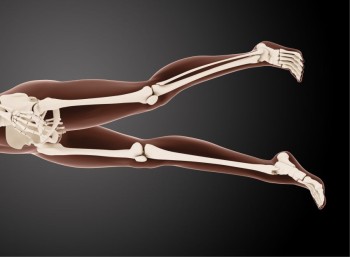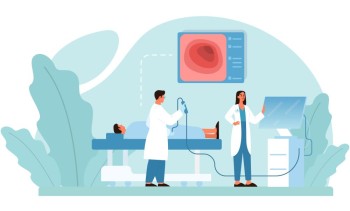
Sinogram X-ray, a vital component of diagnostic imaging, plays a crucial role in assessing the gastrointestinal tract and related organs.
Sinogram X-ray with Cost
Sinogram X-ray in Detail
Introduction
Sinogram X-ray, a vital component of diagnostic
imaging, plays a crucial role in assessing the gastrointestinal tract and
related organs. This detailed examination provides valuable insights into the
functioning and potential abnormalities within the digestive system.
History of Sinogram X-ray
The history of Sinogram X-ray is marked by
continuous advancements in imaging technology. From its early days to the
present, the technique has undergone significant evolution, enhancing its
diagnostic capabilities.
Purpose of Sinogram X-ray
The
primary purpose of Sinogram X-ray is to detect abnormalities in the
gastrointestinal tract. It is particularly effective in evaluating the
structure and function of organs such as the stomach, intestines, bile ducts,
and pancreas.
Types of Sinogram X-rays
Sinogram
X-rays come in various types, each tailored to examine specific aspects of the
digestive system. Gastrointestinal Sinogram, Biliary Tract Sinogram, and
Pancreatic Duct Sinogram offer distinct perspectives, aiding in comprehensive
diagnostics.
Procedure of Sinogram X-ray
Before undergoing a Sinogram X-ray, patients undergo specific preparations to ensure optimal imaging results. The procedure involves the careful administration of contrast agents followed by detailed imaging to visualize the internal structures.
Indications and Contraindications
Sinogram X-ray is
recommended in cases where abnormalities or functional issues in the
gastrointestinal tract are suspected. However, healthcare providers may avoid
the procedure in certain instances, such as allergies to contrast agents or
specific medical conditions.
Risks and Safety Measures
While
generally safe, Sinogram X-ray does carry some inherent risks, including
exposure to ionizing radiation and potential allergic reactions to contrast
agents. Medical practitioners implement essential precautions to reduce these
risks and guarantee the safety of the patients.
Interpreting Sinogram X-ray Results
Interpreting Sinogram X-ray results requires a
thorough understanding of normal and abnormal findings within the
gastrointestinal tract. Healthcare professionals analyze the images to identify
any structural or functional abnormalities.
Comparison with Other
Diagnostic Techniques
Comparing Sinogram X-ray with alternative
diagnostic methods highlights the unique advantages and limitations of each
approach. Understanding these differences assists medical professionals in
choosing the most suitable imaging technique for specific cases.
Case Studies
Real-life
case studies provide tangible examples of how Sinogram X-ray has played a
pivotal role in diagnosing and treating various gastrointestinal conditions.
These cases illustrate the practical application and success of the imaging
technique.
Technological Advancements in Sinogram X-ray
Recent
advancements in imaging technology have significantly improved Sinogram X-ray,
making it more efficient and patient-friendly. Innovations in equipment
contribute to enhanced accuracy and a more comfortable experience for
individuals undergoing the procedure.
Common Misconceptions
about Sinogram X-ray
Addressing common myths and misconceptions
surrounding Sinogram X-ray is crucial for fostering confidence in individuals
scheduled for the procedure. Clearing up misunderstandings ensures informed
decision-making and reduces anxiety.
Future Trends and Developments
As
technology continues to advance, the future of Sinogram X-ray holds promising
possibilities. Emerging trends hint at increased diagnostic accuracy, reduced
invasiveness, and enhanced patient comfort in gastrointestinal imaging.
Patient Experiences and Testimonials
Personal
stories from individuals who have undergone Sinogram X-ray provide valuable
insights into the real-world impact of the procedure. These testimonials offer
a human perspective on the patient experience and its role in their medical
journey.
Conclusion
In
conclusion, Sinogram X-ray stands as a vital tool in gastrointestinal
diagnostics, providing essential information for healthcare professionals. Its
rich history, diverse applications, and ongoing technological improvements make
it an indispensable component of modern medical imaging.
FAQs (Frequently Asked Questions) about Sinogram X-ray
Is Sinogram X-ray only for detecting gastrointestinal issues?
While Sinogram X-ray is primarily used for gastrointestinal diagnostics, it can also be employed to assess other abdominal organs and structures.
Are there alternatives to Sinogram X-ray for gastrointestinal imaging?
Yes, alternative methods such as CT scans and MRI may be used, but the choice depends on the specific diagnostic requirements and the patient's medical condition.
What does the contrast agent used in Sinogram X-ray consist of?
The contrast agent often contains iodine, which enhances the visibility of structures during imaging. It is generally safe, but individuals with iodine allergies should inform their healthcare provider.
Can Sinogram X-ray detect early signs of gastrointestinal cancers?
Yes, Sinogram X-ray can contribute to the early detection of abnormalities, including signs of gastrointestinal cancers. However, additional tests may be required for a comprehensive diagnosis.
How long does it take to receive Sinogram X-ray results?
Results are typically
available shortly after the procedure, and your healthcare provider will
discuss them with you during a follow-up appointment.
(0)
Login to continue



